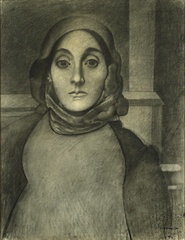Ararat by Egoyan
Our Saturday Night at the Movies was spent comfortably at home with a DVD of Atom Egoyan’s Ararat. Yes, I know it’s already two years old, it took us this long to get around to it. Wow, what a powerful film this is!
Atom Egoyan is an award-winning Canadian filmmaker of Armenian descent. This film is his most personal because it’s about his own people and their history, especially the genocide of Armenians in Turkey in 1915, never acknowledged by Turkey.
“As a Canadian-Armenian filmmaker,” says Atom Egoyan,” I had always contemplated a film about the unique history of the Armenian people. While it was tempting to consider an adaptation of one of several books, I realized it was crucial for me to root the film in the present day. In this way, I could trace the effects of this historic event on the present generation. My goal was to make a film that would allow the viewer to experience the reality of horror in a spiritual sense, and not just present the obvious results of material and physical loss.”
It is a complex many-layered story, as Egoyan’s films are, but fortunately we spent a little time researching it beforehand, especially regarding Armenia. This considerably aided our understanding and enjoyment. One of the interesting sub-plots in the film concerned Armenian artist Arshile Gorky, whose work I knew only a little, and felt compelled to learn more about later. Here is his charcoal drawing of his mother, that is similar to the paintings of her shown in the movie:

from Art Institute of Chicago collection
Ararat was filmed in Toronto and the Drumheller area of Alberta, with some footage of old churches, church art, and Mount Ararat from Turkey. The leading actors, Egoyan’s wife Arsinee Khanjian and Charles Aznavour, are Armenian. Lovely opera singer, Canadian-Armenian Isabel Bayrakdarian sang some of the hauntingly beautiful background music.
There is so much more, so if you haven’t seen it yet, I recommend it highly, especially on DVD, as it’s great in providing a lot of background to the film.